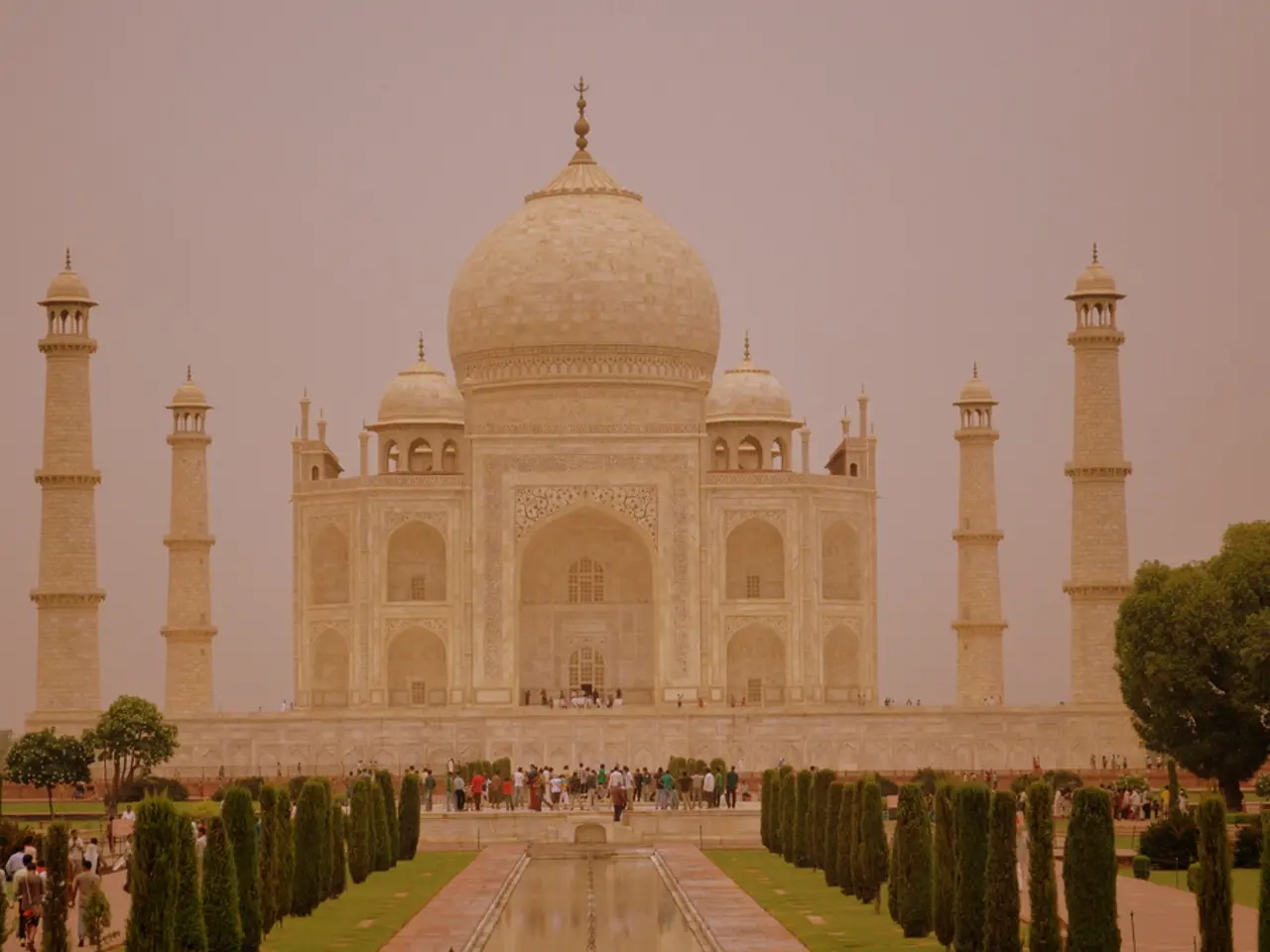Modifying Prime Minister Narendra Modi's Impactful Stewardship in India
Modi's Tenure Reshapes India's Landscape
Since taking office in 2014, Prime Minister Narendra Modi's administration has made significant strides in transforming India's political and economic landscape.
Economic Reforms and Modernization
One of the key achievements of Modi's government has been the introduction of the Goods and Services Tax (GST) in 2017. This landmark initiative unified India's complex taxation system into a single tax framework, simplifying business operations and increasing tax compliance. The demonetization of high-value banknotes in 2016 aimed to curb black money, widen the tax base, and promote digital transactions, with over 99% of banknotes returned, reflecting a major shift in cash usage patterns.
Social Welfare and Development Schemes
The administration has also launched wide-ranging programs targeting financial inclusion, sanitation, housing, energy, and health. Important initiatives include the Jan Dhan Yojana for banking access, Swachh Bharat Abhiyan for cleanliness, Pradhan Mantri Awas Yojana for affordable housing, and Ujjwala Yojana for clean cooking fuel. These have contributed to improved living standards and infrastructure.
Technological and Energy Advancements
By 2025, the government announced ambitious plans reflecting a vision of a self-reliant and technologically advanced India. This includes India’s first semiconductor chip, a tenfold expansion in nuclear energy capacity, and increased defense capabilities such as the Sudarshan Chakra system. Investments in youth employment and active roles in space missions underline a forward-looking economic strategy.
Political Continuity and Symbolic Leadership
Modi has delivered 12 consecutive Independence Day speeches from the Red Fort (2014–2025), surpassing Indira Gandhi’s record of 11 and ranking second only to Jawaharlal Nehru’s 17. This streak underscores his sustained political mandate and visibility, reinforcing his leadership image.
Vision for India 2047
Modi’s speeches emphasize themes of national unity, youth empowerment, and transforming India into a developed, self-reliant nation by the centenary of independence. The government promotes an agenda focused on inclusive growth and elevating India’s global stature.
Global Political Stature
Modi has elevated India's global political stature, forging strong bilateral relations and increasing India's influence in international forums. Programs like Jan Dhan Yojana, UPI, and Aadhaar integration revolutionized banking access and enabled real-time financial services for millions, particularly in rural areas. The Modi government launched the Production Linked Incentive (PLI) scheme to boost manufacturing across sectors, drawing foreign investment and fostering job creation.
Under the Modi government, India emerged as a digital economy leader. The Atmanirbhar Bharat (Self-Reliant India) campaign, under the Modi government, aimed at boosting domestic production and reducing import dependence during the COVID-19 pandemic. India strengthened ties with Western economies through the Indo-Pacific Economic Framework under the Modi government.
Controversial Measures
The Citizenship Amendment Act (CAA) and the controversial demonetization drive in 2016 were controversial measures taken by the Modi government. The CAA faced widespread protests, while the demonetization drive aimed to tackle black money, promote digital payments, and formalize the economy, contributing to a surge in digital transactions and increased scrutiny of cash-based sectors.
Modi leveraged technology to streamline governance with initiatives like Digital India and Direct Benefit Transfer (DBT). Modi abrogated Article 370, effectively revoking Jammu & Kashmir's special status.
Economic Resilience
Despite the challenges posed by the COVID-19 pandemic, India's economic resilience allowed it to project GDP growth to exceed 6 percent in 2025. India has seen unprecedented expansion in road networks, railway modernization, and renewable energy capacity under the Modi government's initiatives like Make in India, Smart Cities, and PM Gati Shakti. The success of Unified Payments Interface (UPI) has made India a global model for fintech innovation.
Overall, Modi’s tenure is marked by bold economic reform, extensive social programs, a push toward technological self-sufficiency, and a strong leadership style that has reshaped India's domestic and international political profile.
- Finance and digital transactions saw a surge under Modi's government due to the significant shift brought about by the demonetization drive in 2016.
- The introduction of the Goods and Services Tax (GST) in 2017 marked a key achievement in simplifying business operations and increasing tax compliance across India.
- The Jan Dhan Yojana, launched by the Modi administration, aimed at providing banking access for all, revolutionizing banking in rural areas.
- Fashion-and-beauty, food-and-drink, and lifestyle sectors, among others, witnessed transformative changes due to the government's emphasis on inclusive growth.
- The Pradhan Mantri Awas Yojana and Ujjwala Yojana, aimed at providing affordable housing and clean cooking fuel, have contributed to improved living standards and infrastructure.
- The Modi government's investments in technology and nuclear energy reflect a vision of a self-reliant, technologically advanced India by 2025.
- The Modi administration launched the Production Linked Incentive (PLI) scheme to boost domestic manufacturing and attract foreign investment.
- Under the Modi government, India claimed leadership in digital economy innovation with the success of the Unified Payments Interface (UPI).
- The Atmanirbhar Bharat campaign aimed to enhance domestic production and reduce import dependence during the COVID-19 pandemic.
- India's political stature rose significantly under Modi's leadership, forging strong bilateral relations and increasing influence in international forums.
- The Modi government's policies, like the Swachh Bharat Abhiyan, have contributed to improving sanitation and cleanliness across the nation.
- The government's push towards renewable energy has resulted in an unprecedented expansion in road networks and railway modernization.
- Weather patterns and forecasting, specifically those related to agriculture, have gained attention due to the impact on rural communities and the agricultural sector.
- The integration of programs like Aadhaar into real-time financial services has transformed the lives of millions across India.
- Sports infrastructure and practices have evolved under Modi's administration, with a focus on development in football, baseball, hockey, golf, sports-betting, European leagues, basketball, MLB, NHL, racing, premier-league, tennis, and mixed-martial-arts.
- The government's investments in youth employment have created a more competitive and self-reliant workforce, particularly in the technology sector.
- In addition to bold economic reforms, the Modi government has tackled controversial issues like the Citizenship Amendment Act (CAA) and the abrogation of Article 370, which has sparked both debate and union.




